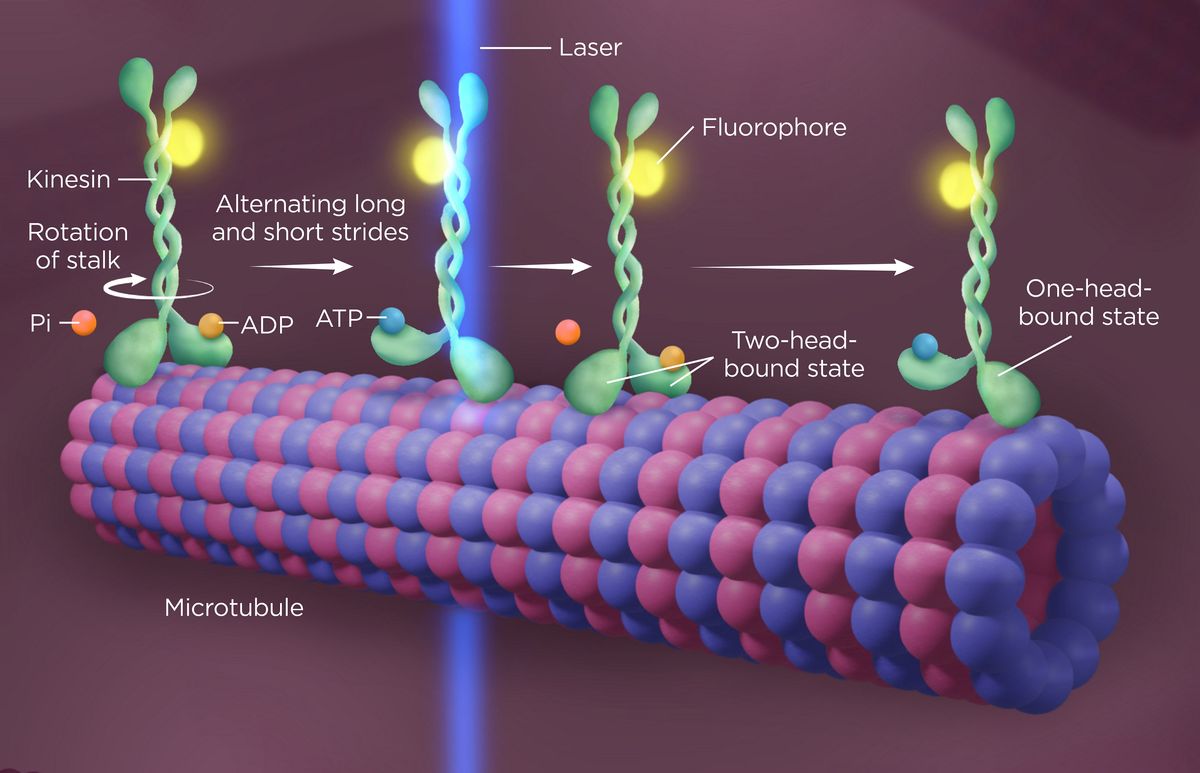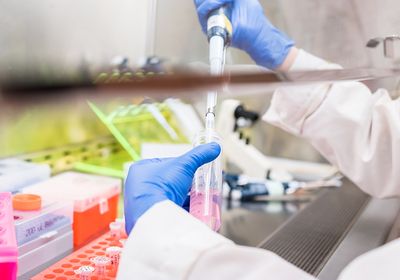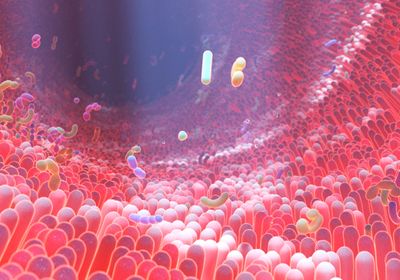It’s a scientist’s dream to observe proteins in motion: an enzyme wrapping snuggly around its substrate, or a motor protein skipping along the cytoskeleton. But tools to visualize these subtle movements, which span mere nanometers, have been lacking. Researchers typically tether the protein to a bead—easily detected under the microscope—and measure the bead’s movement instead. But the cumbersome object, several orders of magnitude larger than the protein, may impede movement. “It leaves room for doubt,” Stefan Hell, a biophysicist at Germany’s Max Planck Institute, tells The Scientist.
In 2016, Hell developed a type of fluorescence microscopy capable of tracking proteins with nanometer resolution. The tool, known as MINFLUX, involves attaching a small organic fluorophore to a protein then exciting the complex with a donut-shaped laser beam. If the protein is anywhere beneath the ring, the fluorophore will glow. But if the laser bullseyes the protein within the dark center of the ring, it won’t glow, and the researchers will know they identified the protein’s exact location. The nanoscope has since been used to successfully visualize the proteins that make up the nuclear pore complex and other macromolecules.
Now, a paper published March 10 in Science describes an improved version of MINFLUX with enhanced spatiotemporal resolution. Instead of a donut-shaped laser, the microscope relies on linear beams which capture movement in a straight line. With this strategy, Hell’s team fluorescently tagged and tracked a motor protein called kinesin as it performed its signature walk down the length of a microtubule.
Kinesin is a vital player in transporting cargo, like neurotransmitter-filled vesicles, along the microtubule rails that span our cells. Fueled by the splitting of ATP, kinesin moves by “stepping” with its two footlike head groups, which alternate their position along the microtubule.
The researchers noticed that kinesin walks unevenly along the microtubule, in an alternating pattern of long and short strides, caused by rotation of the protein’s stalk. They also revealed that ATP binds to the protein when just one of its two head groups is planted on the microtubule. Researchers had previously been divided over whether ATP binds in the two-head state—with both head groups firmly planted—or in the one-head state, with one head lifted off the microtubule. But the new work “settles the issue,” says biophysicist Devarajan Thirumalai at the University of Texas at Austin who was not involved in the study.
The new device isn’t limited to motor proteins—it could provide researchers with a valuable tool for measuring other biomolecules’ conformational changes. And in establishing a better understanding of protein dynamics, researchers may be able to identify new drug-binding sites for pharmaceuticals, says Mark Gerstein, a professor of bioinformatics at Yale University who was not involved in the work.
Martin Aepfelbacher, a microbiologist at the University Medical Centre Hamburg-Eppendorf in Germany, has already harnessed the previous iteration of MINFLUX to visualize molecular machines in bacteria. But the new technique could allow his group “to observe the movements of individual proteins in action,” he says, vastly improving the level of detail that can be observed when it comes to biological activity at the nanoscale.







